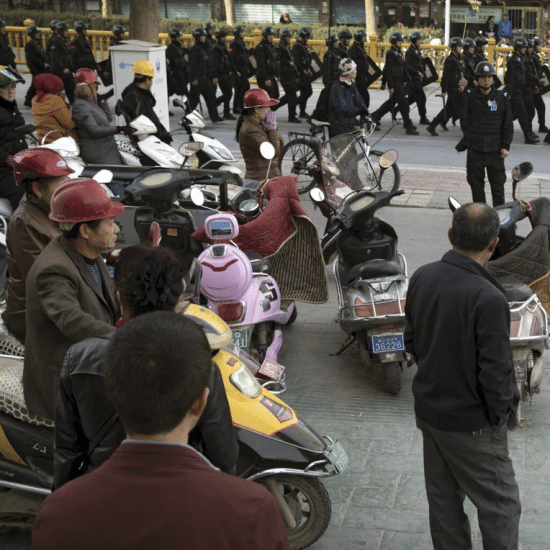The global jewelry industry relies on complex supply chains that hide worker exploitation, according to a Human Rights Watch (HRW) report released in January.
“Jewelers and watchmakers typically rely on complex supply chains to produce each piece of jewelry or watch,” the report stated. “By the time a piece of jewelry is offered for sale, it may be very difficult to know the origins of the gold or diamonds it contains, or whether they are tainted by human rights abuses or environmental harms.”
 Mining for gold and other materials essential for jewelry production provides jobs and income for millions worldwide, but lack of supply chain transparency can result in various negative impacts. (Pixabay)Mining for gold and other materials essential for jewelry production provides jobs and income for millions worldwide, but lack of supply chain transparency can result in various negative impacts.
Mining for gold and other materials essential for jewelry production provides jobs and income for millions worldwide, but lack of supply chain transparency can result in various negative impacts. (Pixabay)Mining for gold and other materials essential for jewelry production provides jobs and income for millions worldwide, but lack of supply chain transparency can result in various negative impacts.
These include child labor, forced labor and human trafficking, unsafe working conditions, forced displacement of indigenous populations at mining sites, armed conflict over control of resources and environmental pollution.
The report explains the jewelry supply chain from raw materials to the finished product for sale in stores around the world, and it includes portions of interviews with children and adults regarding their experiences mining for precious metals.
HRW investigated the supply chains of 13 jewelry brands that comprise an estimated $30 billion in annual sales revenue, using eight benchmarks in assessing their oversight:
1. Put in place a robust supply chain policy that is incorporated into contracts with suppliers.
2. Establish chain of custody over gold and diamonds by documenting business transactions along the full supply chain back to the mine of origin, including by requiring suppliers to share detailed evidence of the supply chain.
3. Assess human rights risks throughout their supply chains.
4. Respond to human rights risks throughout their supply chains.
5. Check their own conduct and that of their suppliers through independent third-party audits (a systematic and independent examination of a company’s conduct).
6. Publicly report on their human rights due diligence, including risks identified.
7. Publish the names of their gold and diamond suppliers.
8. Source from responsible, rights-respecting artisanal and small-scale mines.
While none of the companies fulfilled all of these criteria, Tiffany and Co. (U.S.) was given a “strong” rating, indicating that they “have taken significant steps toward responsible sourcing.”
Receiving a “moderate” rating for making “some important steps towards responsible sourcing” were Bulgari (Italy), Cartier (France), Pandora (Denmark) and Signet (U.S.).
Signet, HRW explained, is the “United States-based parent company of Kay Jewelers and Zales in the U.S., Ernest Jones and H. Samuel in the U.K. and other jewelers.”
Boodles (U.K.), Chopard (Switzerland), Christ (Germany) and Harry Winston (U.S.) all received a “weak” rating for taking “few steps towards responsible sourcing,” while Tanishq (India) was rated “very weak” due to lack of evidence that they were working toward responsible sourcing.
Three jewelry companies – Kalyan (India), Rolex (Switzerland) and TBZ Ltd (India) – were not ranked since they didn’t supply HRW information on their sourcing practices.
“Despite this complexity, jewelry companies have a responsibility to ensure that their businesses do not contribute to human rights abuses at any point in their supply chains,” HRW emphasized. “Some companies engage in philanthropy or social programs outside their own operations as part of their commitments to corporate social responsibility. Such charitable endeavors are largely unrelated to the question of whether a company is living up to its human rights responsibilities under the U.N. Guiding Principles.”
The full report is available here.
This article originally appeared on EthicsDaily.com.






